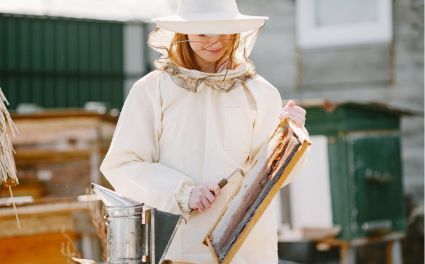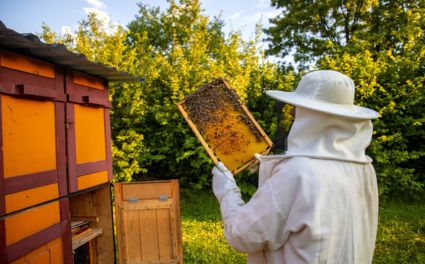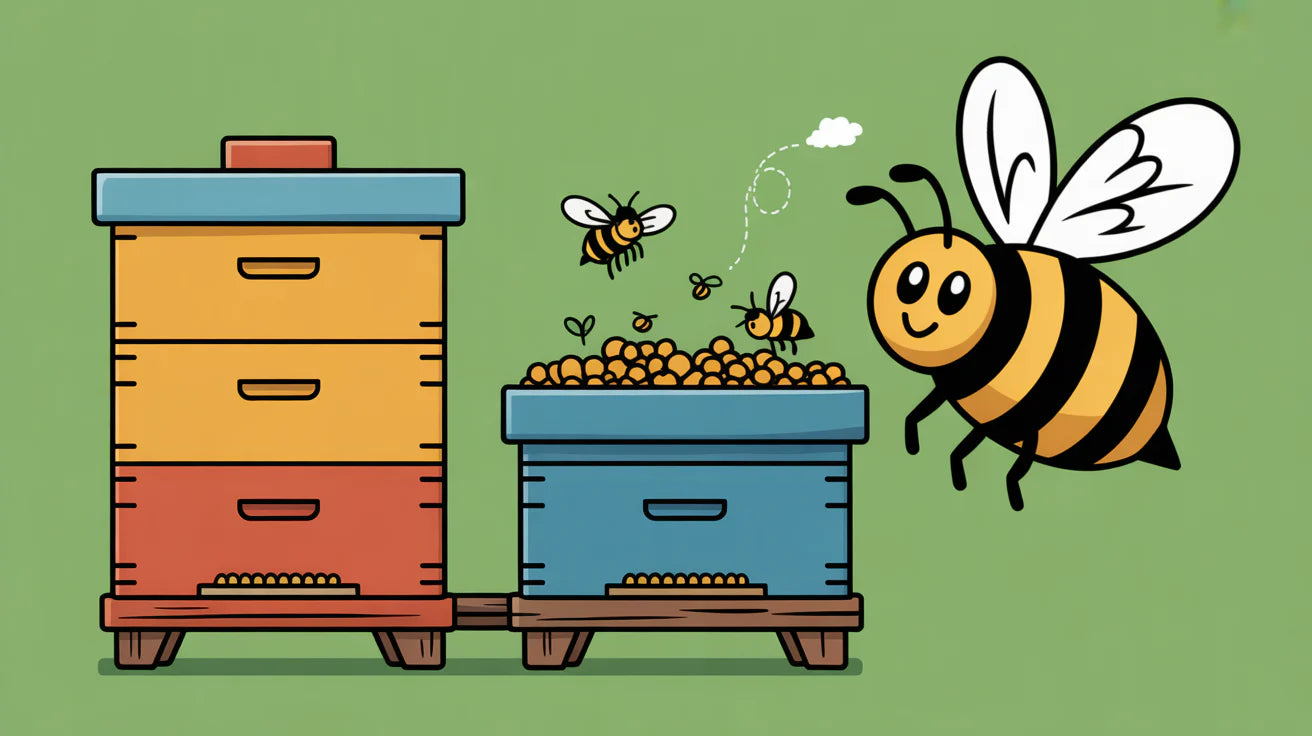There’s a quiet kind of magic in watching two colonies become one, especially when done right. Whether you're trying to rescue a dwindling hive, balance colony strength, or make better use of your beekeeping resources, learning how to merge two beehives safely is a skill every beekeeper should have in their back pocket. But here’s the catch, combine them wrong, and you might end up with dead queens, fighting bees, or a total colony collapse.
So, how do we go about this the right way? Let me walk you through it like I would with a fellow beekeeper over coffee, simple, honest, and straight from the field.
So, Can You Combine Two Bee Hives? Yes, But Timing And Method Matter
If you're wondering, can you combine two bee hives without stressing your bees or creating chaos? The answer is absolutely yes. But there’s a difference between tossing two colonies into the same box and truly uniting them as one functioning family. Bees are territorial little creatures. Dump one group into another’s home without a proper introduction, and they’ll fight to the death defending their turf.
That’s why we focus on slow, strategic introductions, allowing the bees time to accept each other, especially the queens, who are the true heart of the hive.
Why Would You Even Combine Beehives In The First Place?
There are a handful of solid reasons for combining beehives:
-
One hive is too weak to survive winter on its own.
-
A colony is queenless and struggling.
-
You've had a swarm, and one of your splits didn't take.
-
You want to strengthen a colony to make the most of a honey flow.
In my own experience, combining two hives before winter has saved more bees than any treatment or gadget out there. But it’s not just about survival, it’s about creating a strong, self-sufficient unit that can build, defend, and thrive.
When's The Right Time To Combine Hives?
Late summer or early autumn tends to be ideal. By this time, nectar flow is winding down, and weaker colonies may not have enough stores or bees to make it through the colder months. Spring combinations can work too, especially if one hive has gone queenless, but you'll want to move fast before the swarm season kicks in.
That said, you can technically combine colonies anytime the temperature is warm enough for bees to move freely and you’ve done your inspections properly.
The Famous Newspaper Method, And Why It’s Still The Best Way To Unite Two Beehives
Let me tell you straight, after all these years, I still rely on the good ol’ newspaper trick when combining colonies. It’s simple, cheap, and works like a charm.
Step-by-Step Guide:
-
Inspect both hives. Make sure at least one of them has a healthy queen. If both do, you’ll have to decide which queen to keep, usually the younger, more productive one. Use your beekeeping smoker and stainless steel hive tool to gently pry frames loose during inspection.
-
Remove one queen. Kill or remove the queen from the hive you’re combining. This is tough, but necessary. Bees won't tolerate two queens.
-
Stack hives with newspaper. Take the hive you want to keep on the bottom. Add a single sheet of newspaper over the top bars, then place the queenless hive on top. The paper prevents immediate contact and gives the bees time to get used to each other’s scent.
-
Wait 5 to 7 days. Replace the lid and leave it alone. The bees will chew through the paper gradually. By the time they meet, they’ll smell the same and are far less likely to fight.
Don't Rush It, Slow Introductions Are Everything
Think of it like blending two households. You wouldn’t just shove two families into one home and hope they get along. You’d give them a chance to adjust, communicate, and find their rhythm. Bees are no different. The newspaper method works because it respects their social structure and lets them adapt.
Tips From The Field For A Smooth Merge
Here are some field-tested tips to help make your merge successful:
Use A Fume Board Or Smoke Sparingly
A light puff of smoke calms the bees and makes frame manipulation easier. Use your beekeeping smoker wisely—you want them calm, not stressed.
Always Wear Proper Gear
When combining two colonies, protection is crucial. Suit up with beekeeping suits, beekeeping gloves, and beekeeping veils. Our 3 beekeeping khaki layer suits and ventilated beekeeping suits provide comfort and full protection during merges.
Don’t Mix Sick Bees With Healthy Ones
If a weak hive is sick, do not combine it with a healthy one. Use gear from your beekeeping kit with suits to isolate the colony and treat it separately.
Try Scent-masking Sprays, if Necessary
Some use sugar water mixed with lemongrass oil to help bees accept each other. Use with caution—eventually, natural scent recognition is vital.
What About Combining A Weak Hive With A Strong One?
This is one of the most common and effective strategies. Place the weaker hive on top so the stronger colony manages entrance defence and temperature. Remember to remove the queen from the weaker hive to avoid conflict.
Outfit yourself with beekeeping jackets, beekeeping trousers, and ankle protection gear for maximum safety.
After The Merge, What To Watch For
About a week post-merge, check for:
-
Calm activity across frames
-
No fighting or excessive dead bees
-
A healthy queen and new brood
Use your OZ Armour bee brush and inspect gently. Your goal is to see one unified, healthy colony.
What If The Merge Fails?
If it goes wrong, don't panic. Rebuild with frames from the stronger hive and use a Nuc box to reintroduce a new queen.
Explore our kids beekeeping suits if you’re involving family, or pink beekeeping suits for a personal touch.
Wrapping Up The Merge: It’s All About Respecting Bee Behaviour
Combining colonies isn’t just a technique—it’s a respectful process that takes timing, care, and good tools. At OZ Armour, we offer dependable beekeeping equipment trusted by beekeepers across the globe.
Be Patient, Be Gentle, And Let The Bees Teach You
Real learning in beekeeping comes from observing and adapting. Take your time, suit up, and work with the bees—not against them.
Ready to elevate your beekeeping experience? Explore the full range of OZ Armour gear and read more blogs about beekeeping to keep growing in your craft.



